What Surplus Should Taste Like
Writer Jay Orff wanders the aisles of Ax-Man Surplus, musing on aesthetic evolutions, beautiful ugliness, creative ironies and the irresistible invitation to put old things to new use.
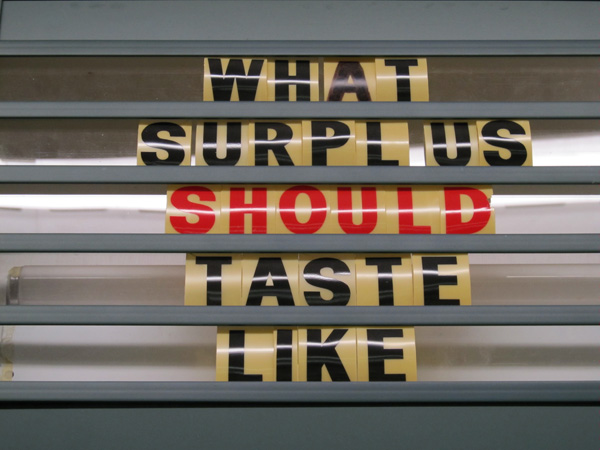
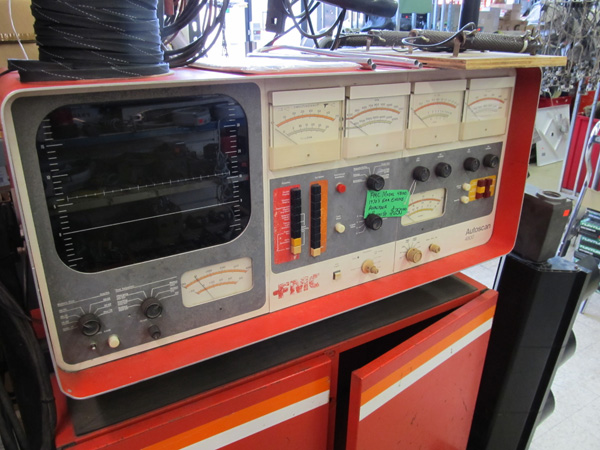
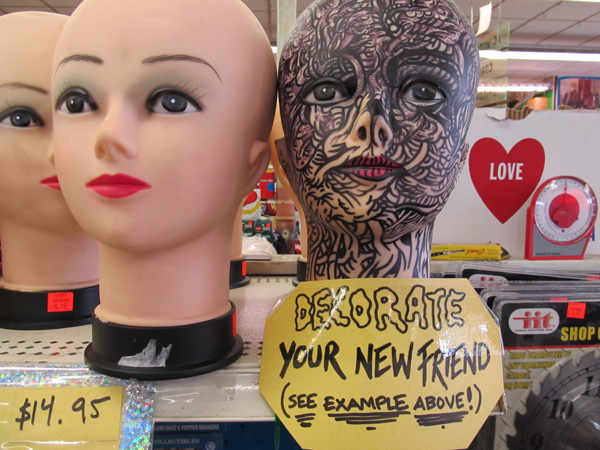
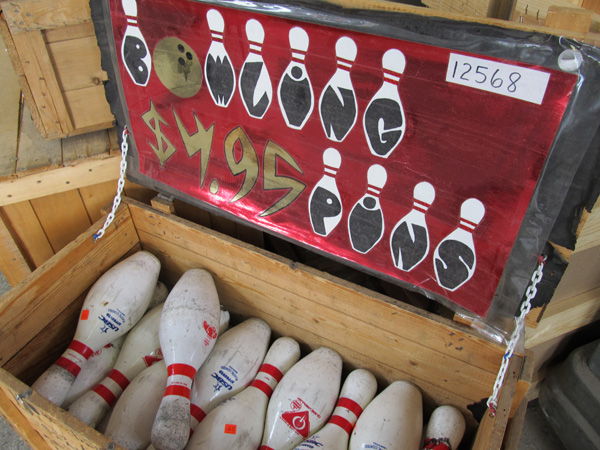
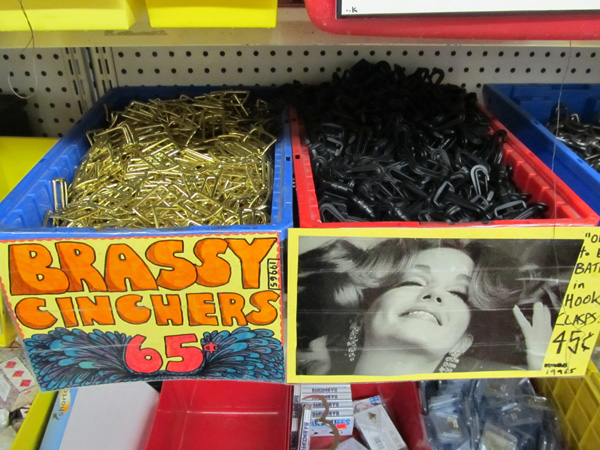
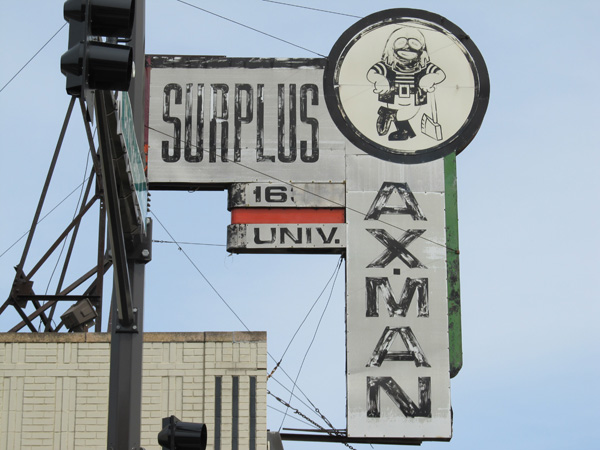
I’m wandering the aisles of Ax-Man Surplus on University Avenue. There is another man in the aisle for fasteners and miscellaneous metal parts; he is about my age, a little older — looks like a math teacher from Maple Grove come into the city to get parts for whatever project is awaiting him at home. A sixteen-year-old boy approaches him: shaggy black hair, appropriately disinterested. The man says to the boy, “You find anything?” The kid shrugs, looks away. The man says, “No baby heads?” and smiles. The trip, I imagine, is a Saturday morning ritual shared by the geeky dad and his son, driving into St. Paul to visit the surplus/junk/art supply store. During some previous trip the kid had undoubtedly found a bin of baby heads and brought an armload home, creating a grizzly assemblage featuring decapitated doll heads. And despite his appearance, Dad was hip to the bizarre, to weird art, and he wanted his son to know it; that’s what they were doing here.
In another five or six years, the boy might be working behind the counter. He’s already wearing the employee uniform: a dark t-shirt, dark jeans, glasses and a studied, slightly scruffy exterior; he doesn’t have the tattoos yet. After talking with the employees at Ax-Man, I got the sense they might have all had well-intentioned fathers, too. The staff is easy-going and affable — playing techno music, ready to answer my questions, happy to be here, in this place that celebrates the unexpected. There is a sign in back that lets you know Ax-Man “tastes like surplus should.”
That taste, for the record, is a metallic, shop-class tang.
Of course, on the one hand, Ax-Man is simply a surplus store. Many of the people shopping are just looking for low-price coffee mugs or baking sheets or whatever is in stock. But Ax-Man has another, well understood function as alternative art supply store. The store’s employees say artists visit constantly, always on the lookout for something with that elusive quality suggesting it’s ready to become something new. A mysterious hunk of metal, an impossible amalgamation of foam and plastic, the detritus of manufacturing, bits usually hidden within automobile engines and refrigerators — all are here disassembled, a vivisection of American consumerism stocking Ax-Man’s shelves, ready to be repurposed, appropriated.
There is a general idea I want to introduce: that there’s an evolution of aesthetics underway, from visual to conceptual, and a transition in the way beauty functions in art toward something I am currently thinking of as ‘aesthetic conceptualism.’ I read that when someone told Marcel Duchamp his readymades were beautiful, he considered it the worst thing one could say; he was trying to escape beauty, to escape the received notion of visual beauty, to find objects that generated no emotional reaction at all, art that was blank. But rather than moving toward the blank, I think we have instead learned to see beauty in what was formerly considered ugly, or at least not beautiful — the commonplace, bits of rusted metal and extruded plastic, the scraps of metal I hang on my wall (which I’ve written about here before). We have learned to appreciate these as beautiful objects, particularly when placed in a gallery and called art.
______________________________________________________
At Ax-Man you can get a whole bucket of concept — mass production, fading industrialism, late stage capitalism — thrown in for free when you buy one of their mannequin heads.
______________________________________________________
I walk through Ax-Man wide-eyed, overwhelmed by the perplexing, odd, and delightful. Perhaps I should be homing in on those things that don’t make me giggle or wonder what the hell they could have been made for; maybe I should be looking for blank readymades. Instead, I am captivated by a 1980s auto diagnostic machine, with all its knobs and readout screens, created to repair cars that are no longer on the road, radiating extinct precision. So much of what is here is full of potential, suggests so much meaning; they’re hard artifacts, examples, for one thing, of an ever-disappearing manufacturing past. But mostly they strike my 2012 visual sensibility as simply beautiful — lines and curves and colors that strike the eye, that would make perfect pieces for a larger puzzle of one’s own design. Ax-Man is a supply store for strange and striking castoff bits that please in their oddness, in part because they are junk, ugly. Beautifully ugly. Can we say that yet? Is it too late to say that?
But surely the current progression of aesthetics and art isn’t just about accommodating a new sense of what can be beautiful. Isn’t there more to this than an ever expanding set which includes more and more? If that were the case, eventually everything would be beautiful and the word would lose its meaning. I think it already has, actually. I have doubts that visual aesthetic beauty is what art is at its essential core — if it has an essential core — even if it’s clear the evolution of beauty is a part of what art does.
What was considered ugly once is now put on greeting cards. What was beautiful in the past now looks creepy. Do you need to push the beautiful/ugly envelope for your art to be relevant? It’s certainly a viable option — one way to undermine expectations, to pull us out of the moment we are in and force a redefinition of what comes next. It’s one way to remake the world. But I don’t think visual beauty is the fundamental ground of aesthetics any longer; we’ve gone all the way around that and come to someplace else. You can reference visual beauty, you can use it, but it works within a larger aesthetic conceptual framework now, one which has always been lurking in that elusive “essential” core of art, which has, at this moment, moved to the forefront.
And at Ax-Man you can get a whole bucket of concept — mass production, fading industrialism, late stage capitalism — thrown in for free when you buy one of their mannequin heads.
I think it’s important that everything at Ax-Man was made for a specific purpose, a purpose often ignored by the people buying them. When you turn these previously-defined things into something else, it’s an alchemy of sorts, and Ax-Man is the land of opportunity for those that would practice this post-modern iteration of the art. Many of the price tags and item descriptors in the store are themselves collages and drawings that entice in ways to encourage and inspire a consideration of those expanded meanings. The store is a warehouse of transformation, an invitation to a change one’s way of seeing. What is that, if not something art has always done, from cave paintings to computer installations?
As I wander these aisles, it strikes me that I am much more like the kid looking for that weird something with which to shock my friends than the dad (whom I more closely physically resemble). Dad has a list, he needs a bolt or a clamp that will serve a specific function; it makes me feel a little juvenile, a little unfinished in my thoughts about what art can be, still a kid looking for a joke. But we all appreciate why we’re here. And really Ax-Man is no different than any other store, just more obvious in that its wares are easily converted to other purposes than those originally intended. For that matter, many of these objects could now only exist for that alternate purpose — something understandably rare in retail, selling items that don’t do what they were made for. It’s the anti-Target. (However, it would be interesting to visit a big box store and buy things solely to use in ways they were not intended.)
Ax-Man offers a primer in creative irony: nothing is what it says it is or, at least, it is easy to imagine nearly everything here as something else. Look around; there are plenty of examples on the walls if you need help picturing it. You are greeted at the front door by a crate of bowling pins priced to sell. What else could this be but an invitation to think outside the frame?
Jay Orff is a writer, musician and filmmaker now living in New York. His fiction has appeared in Reed, Spout, Chain and Harper’s Magazine. Read more on www.jayorff.com.